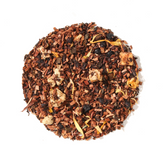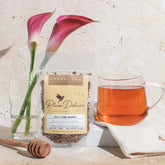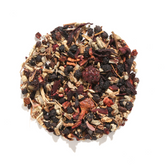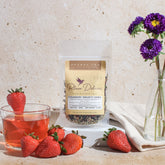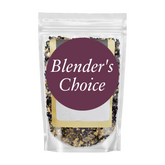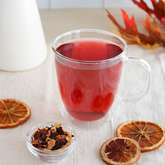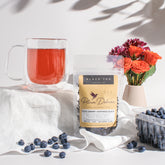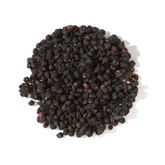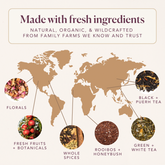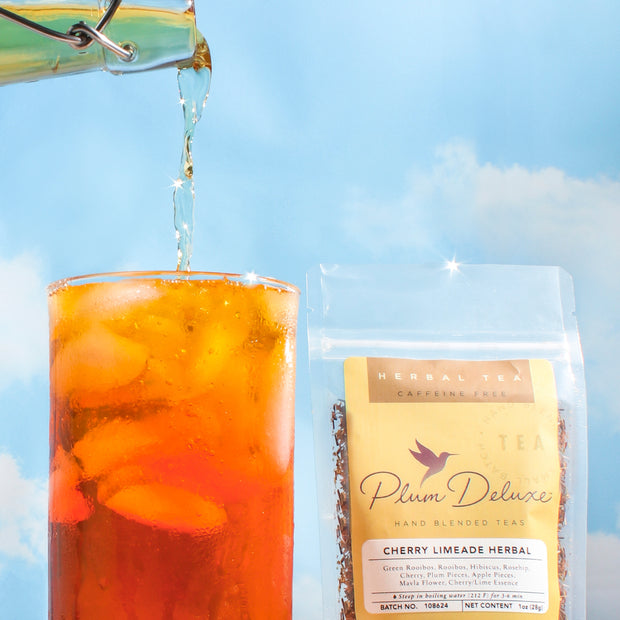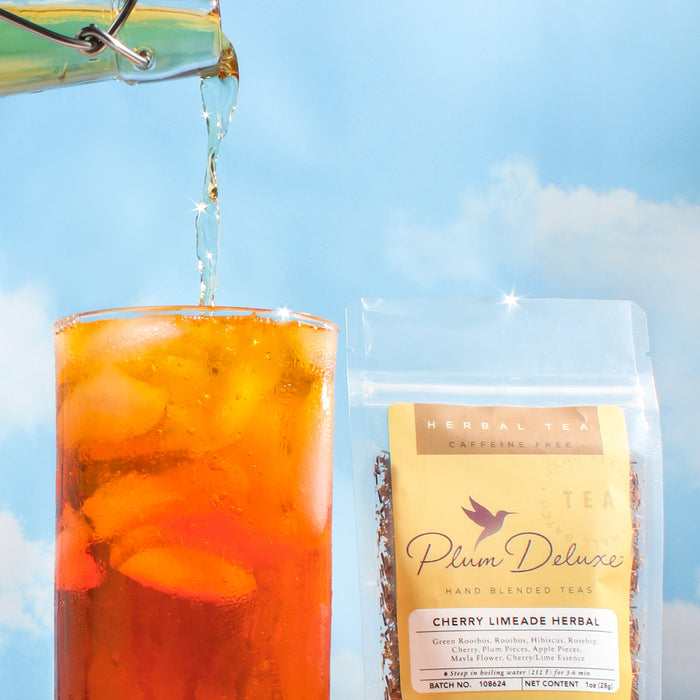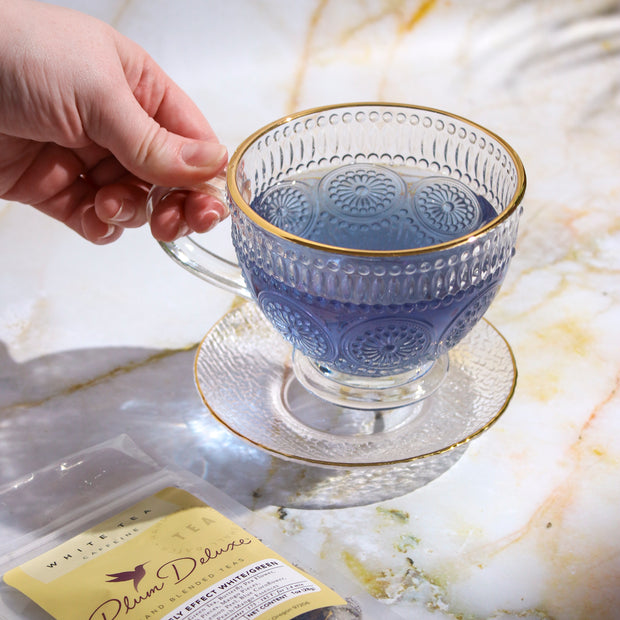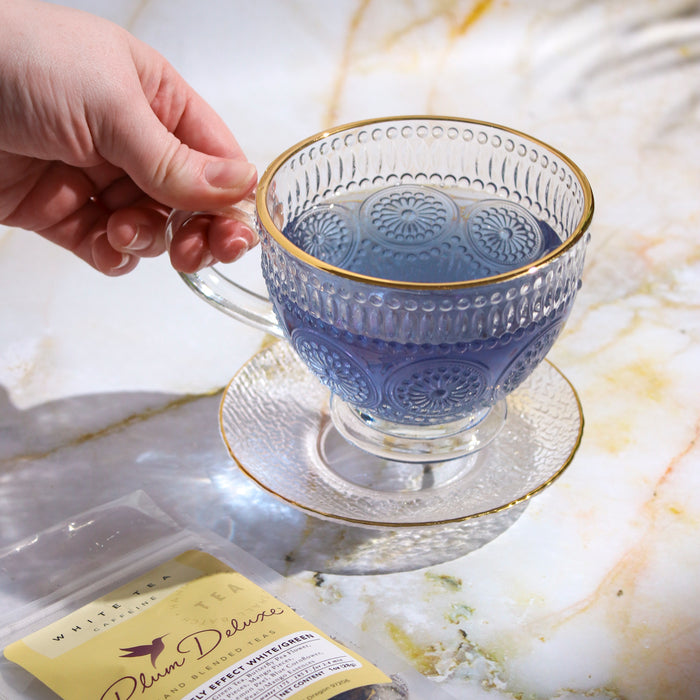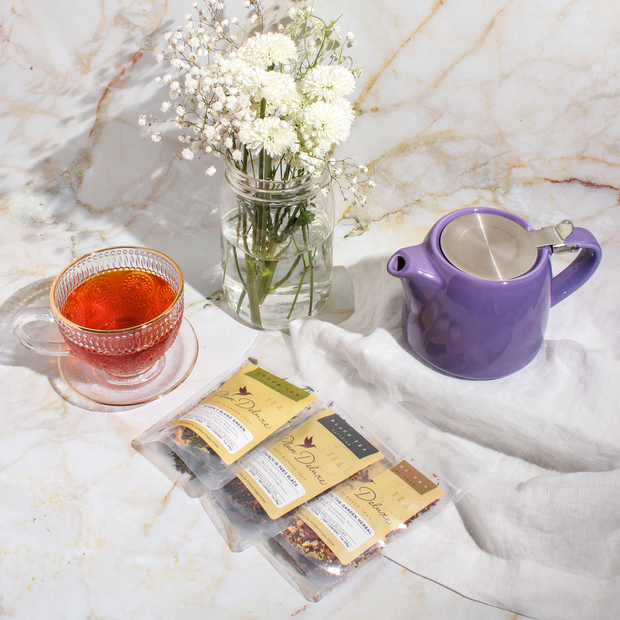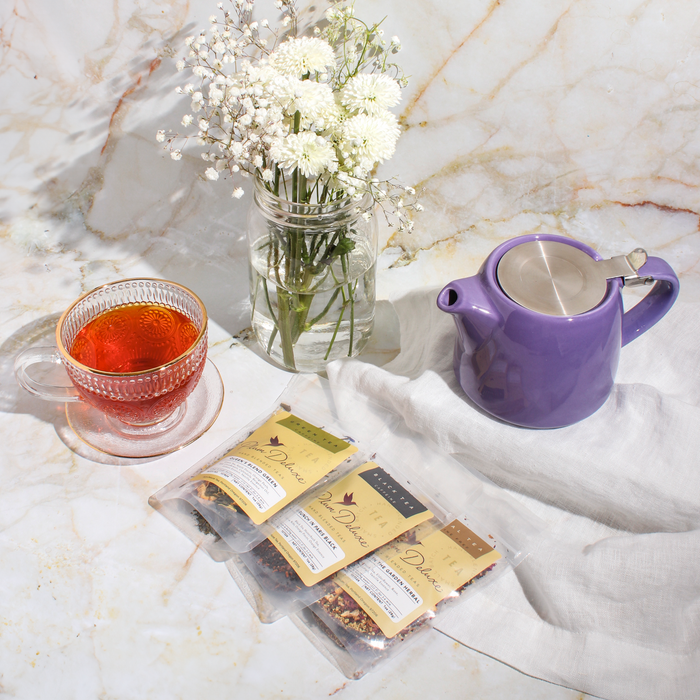
How to Infuse Honey
Once you learn how to infuse honey, you’ll have almost endless possibilities of flavor combinations to explore. A jar makes a sweet addition to your tea ritual, a quick and welcome hostess gift, or a unique accompaniment to a tea party.
Infusing honey is easy: simply choose herbs, spices, and fruit and place them in a clean jar, then cover them in honey. This mixture can sit overnight and be strained the next day, steeped for a few days and then strained, or strained with your loose leaf tea each time you add it to a cup, depending on the ingredients chosen. While the process is simple, there are some tips for learning how to infuse honey.
While honey is naturally antibacterial and anti-fungal, I recommend straining any fresh plant matter after infusing it for a day and storing the resulting honey in the refrigerator. Fresh plants parts, like leaves or flowers, could introduce moisture into the honey. This added water can encourage yeast to form and cause the honey to ferment, which under controlled circumstances is how mead is made. Honeysuckle honey, for instance, is a wonderful way to capture that rich scent of spring, but dried honeysuckle just doesn’t hold the flavor and can get quite bitter. This is an example of when you may choose to use fresh flowers.
When choosing honey to infuse, you can use raw, local, or regular store-bought honey, but you want to stay away from heavily flavored dark honeys like buckwheat. The tastes and colors of your chosen ingredients will come through better in lighter, more delicately-flavored honey like orange blossom or clover.
While I choose to infuse honey over time when using dried material, you do have the option to use a quicker method of slowly infusing honey over low heat until the flavors meld. This method could also be called for if infusing mainly bark or roots, as the flavor and properties can be harder to extract. Heating honey may remove some of the beneficial properties, though, and isn’t a method I have used.

What You Can Infuse into Honey
Most herbs, dried fruit, and fresh citrus can infuse into honey; the honey will take on the properties and health benefits of what you infuse it with. Learning how to infuse honey is a good way to explore your favorite herbal allies and flavors in a new way.
There are so many flavor combinations or simple options of using just one ingredient at a time. Let your imagination and intuition lead you to different flavor combinations. You can even rotate your honey flavors for the season! Spices like fresh or dried ginger, cinnamon, cardamom, and cloves make wonderful fall and winter honeys to add to your chai and spiced teas.
In spring and summer, flowers like lavender, honeysuckle, and roses will make for light, perfumed honeys that will showcase the floral notes without the bitterness. Fresh lemon and ginger makes a thin, syrupy honey that is a longstanding favorite of mine.
Savory honeys are also an option, with garlic and dried chili honeys that would compliment chicken, cheeseboards, and stuffy noses. You could even try infusing your favorite tea blends into honey. Self Care Blend, Refreshing After Dinner Mint, and Sage Wellness tea would all be incredible infused into a jar of honey.
How to Use Infused Honey
There are so many ways to use infused honey. Stir it into tea, warm milk, or even just hot water. It would also make a great addition to a hot toddy. You can use it with food, as well. Drizzle the honey over fresh fruit, soft cheeses like brie sprinkled with nuts. Host a cheese and honey tasting, or add it to yogurt, ice cream, or spritzers. It's delicious spread on toast along with banana, coconut, and peanut butter for one of my favorite breakfasts.

How to Make Elderberry Honey
My favorite honey to make during the cold and flu season is an elderberry honey, similar to the elderberry syrup that has become popular among herbalists and those looking for more natural remedies. I mix Just Elderberry tea, lemon, ginger, and cinnamon, and infuse it into clover or orange blossom honey.
The honey infuses fairly quickly, with the deep purple color taking over in just a few days. You can strain the honey all at once when it has reached the flavor and consistency you like, or strain it as you use it by pouring it through your loose leaf tea strainer. I like to leave the elderberry honey to sit, then strain as I use it so I make sure I’m getting all of the benefits by letting the berries steep with my tea. Just be sure that as soon as plant matter is no longer covered by honey, to either add more honey or strain the rest of the mixture into a clean jar. You can always make a sweet tea with the remaining berry mixture. The lemon and ginger will thin out the honey with their juice into more of a syrup.
I also like to top off the mixture with some whiskey to thin it further, add that depth of flavor, and increase shelf stability, but that is completely optional.

Elderberry Infused Honey
Ingredients:
- 1 ounce Just Elderberry tea
- 1 lemon
- Fresh ginger, about 2 inches
- 1 cinnamon stick
- Honey, enough to fill jar
Directions:
Wash and thinly slice lemon. Peel and slice ginger.
Place elderberry tea, lemon, ginger, and 1 cinnamon stick into a clean mason jar.
Pour honey to completely cover. You can use a chopstick or butter knife to stir the plant matter to make sure that the honey has seeped into all of the nooks and crannies.
Let mixture sit for at least 3 days, rotating jar to mix and tasting once a day. Strain when mixture has reached flavor and consistency you enjoy.
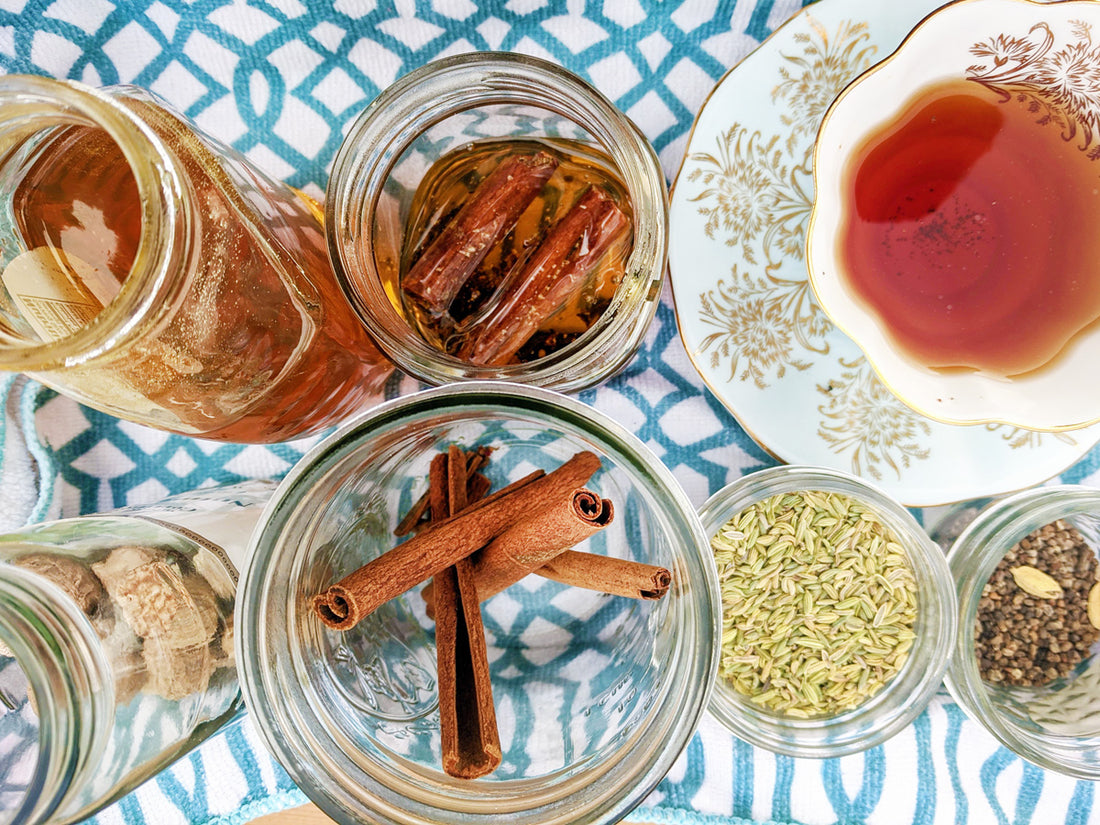
![Summer Iced Tea Variety Pack [6-Pack Variety of Flavors]](http://www.plumdeluxe.com/cdn/shop/files/summervarietypack.png?v=1713833466&width=165)


